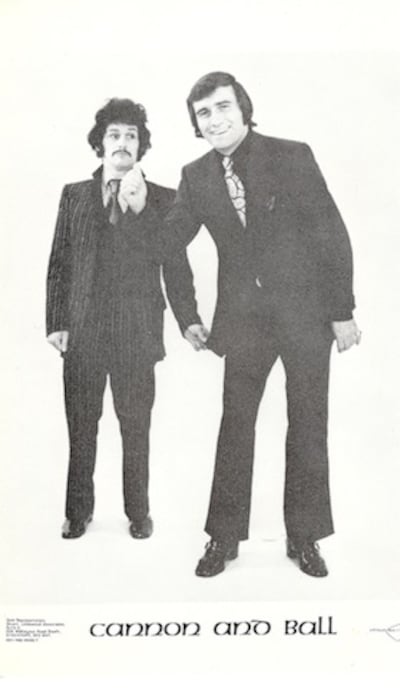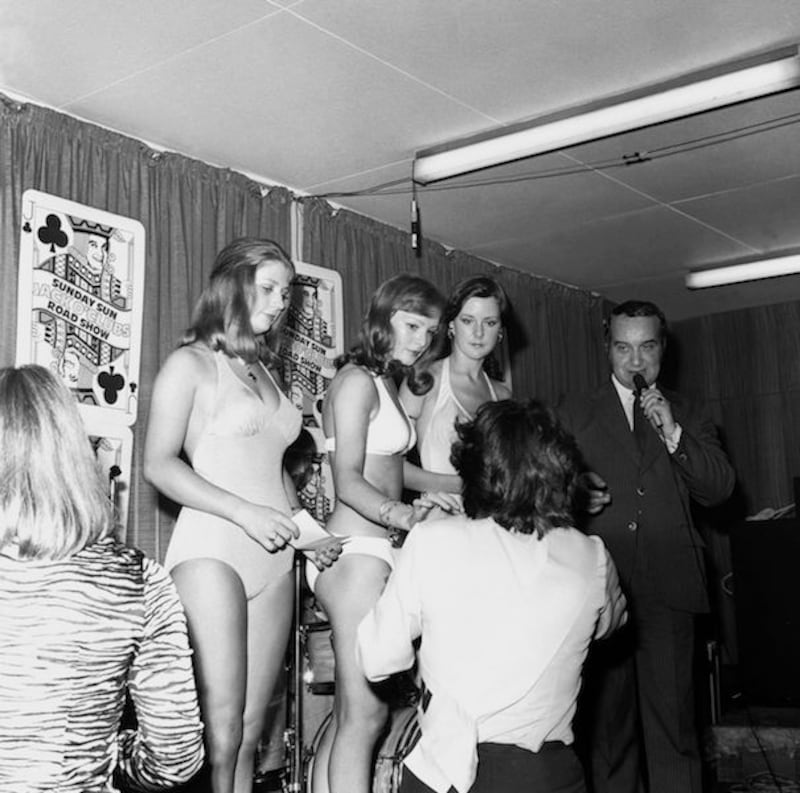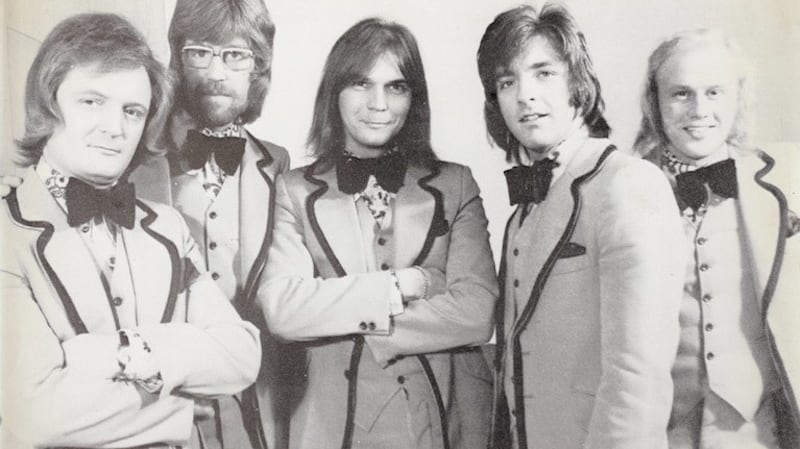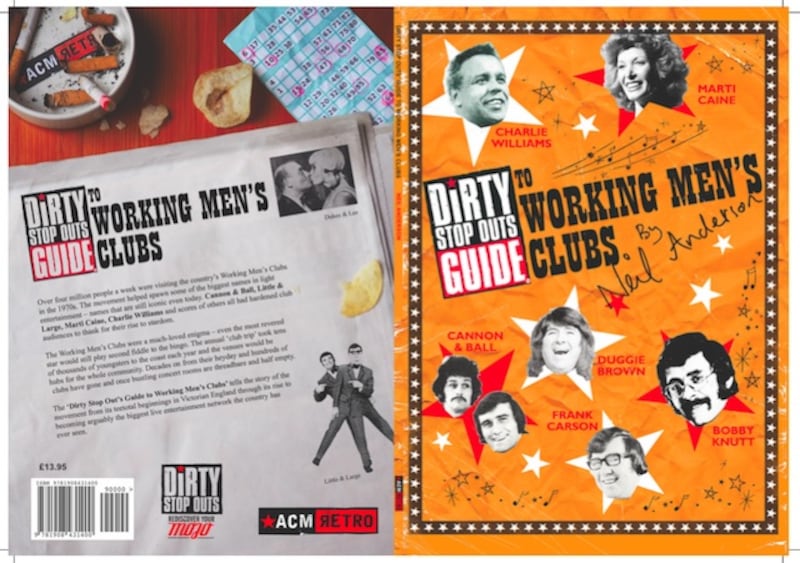It’s hard to appreciate the stranglehold the Working Men’s Club movement had over life in Britain in the 1970s.
With more than four million members frequenting more than 4,000 clubs across the country, the movement’s influence permeated every sector of society. It provided the training ground for scores of acts that became national icons – names like Cannon & Ball, Les Dawson, Little & Large, Marti Caine, Paul Shane and scores of others all had hardened club audiences to thank for their rise to stardom.

The roll call of success stories also included Ireland’s own Frank Carson – the comic became a massive hit with audiences and one of the most enduring acts of his generation.
The Working Men’s Club movement was traditionally at its most popular around major concentrations of heavy industry – areas of coalmining, steel, car manufacturing etc provided audiences in their tens of thousands.
Clubs existed in the south of England but never had the same relevance. Subsidised alcohol was consumed on an industrial scale by club audiences, strippers turned Sunday dinnertimes into a male-only world and even the biggest names in show business knew they were still playing second fiddle to the true star of the show – the bingo.
The Working Men’s Clubs of the era were a much loved enigma – regularly out of step with modern life, even in the decidedly un-PC 1970s.
The “typical” northern Working Men’s Club was even immortalised in its own prime-time ITV series – the Wheeltappers and Shunters Social Club – which made stars out of comics Bernard Manning and Colin Crompton.
The show’s portrayal of an inept club chairman providing meaningless commentary from his ringside vantage point whilst regularly interrupting star acts in the process was a fair depiction of life in many northern clubs.
The show was the brainchild of Granada TV producer Johnnie Hamp and filmed in Manchester. But interestingly clubland performers of the era point to Manchester being a cut above. It was always seen as a city with far more panache in terms of clubland.

Instead of a flat-cap wearing concert chairman they’d have a suited and booted compere (male or female) who’d give a show a certain polish and finesse that wouldn’t be that dissimilar to the cabaret clubs of the era.
Indeed comedian Jimmy Carol, who first started gigging in the late 1970s, told me: “Manchester was different. It was more like a cabaret club in many venues. You’d have a proper compere and a full house band.”
Many would say the movement in the 1970s – complete with strippers and Bernard Manning – summed up everything that was wrong with the country.
Fast forward to the largely threadbare existence of many Working Men’s Clubs in 2017 and it’s hard to appreciate the movement – less than four decades ago – presided over arguably the biggest live entertainment network of its kind Britain has known.
Everything from the smoking ban to licensing deregulation has been blamed for half-empty concert rooms and membership in freefall. But you only have to look at the once thriving industries that provided the audiences – coal mines, steel mills and so on – which are either gone altogether or unrecognisable in terms of the amount of workers they once employed.
I spent three years researching the Working Men’s Club movement and it’s fair to say its boom years of the 1970s couldn’t be further removed from the original concept.
Victorian social reformer and strict teetotaler Henry Solly first launched the Working Men’s Club and Institute Union (CIU) in 1862.
His aim was to give the working man an education, middle-class values and, most of all, keep him out of the pub. He’d have probably turned in his grave if he’d have realised what he eventually unleashed across the country 100 or so years later.

It’s interesting that the lack of rights for women – which still plague parts of the movement even today – wasn’t an issue in 1862. The women gave the Working Men’s Clubs concept their wholehearted blessing as the zero-tolerance to alcohol meant cases of wife-beating would drop through the floor.
Henry Solly lost the alcohol argument within a few years of the launch of the movement but, nevertheless, things developed steadily over the first few decades with a steady proliferation of venues and membership.
It was the 1960s when everything changed and venues started looking to the bright lights of London and Las Vegas for inspiration.
The decidedly unglamorous-sounding Greasborough (a suburb of Rotherham) was seen as ground zero in terms of a clubland renaissance.
Greasborough Social Club, which opened in 1961, is widely seen as the first Working Men’s Club to attract the biggest acts in the world and get them to perform for blue-collar workers in their own backyard.
The kinds of acts they attracted read like a who’s who of West End (and sometimes Hollywood) entertainment.
It was a true revelation. Jayne Mansfield did a week, Johnnie Ray came with 12-piece band, Bob Monkhouse was a regular, Lynne Perrie (later to play Ivy Tilsley in Coronation Street) performed and so did scores of others.
Bernie Clifton, who found fame via the Working Men’s Club circuit, said: “Greasborough took things to a whole never level. You would aspire to perform there. This was the venue that started booking the stars for the first time. Before then it was unheard of a television or theatre star to perform in a Working Men’s Club – they broke the mould.”
Their success helped lead to a massive investment in Working Men's Club in the 1960s which provided the basis for their incredible popularity in the 1970s.
Neil Anderson's Dirty Stop Out's Guide to Working Men's Clubs includes scores of rare photos together with interviews with performers, punters and more. The book is published by acmretro.com and is available from bookshops at £13.95











